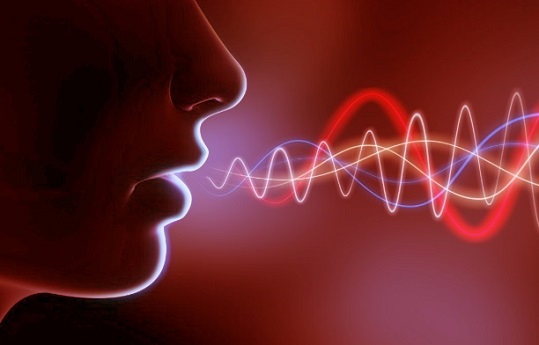Nikhil Prasad Fact checked by:Thailand Medical News Team Jan 02, 2025 11 months, 2 days, 19 hours, 35 minutes ago
Medical News: A new study has delved deep into the long-term effects of COVID-19, focusing on how the disease impacts voice and speech. Conducted by Brazilian researchers from the São Paulo State University, the University of São Paulo, and Mackenzie Presbyterian University, the study examined acoustic characteristics of voice and speech in individuals who had recovered from COVID-19 compared to those who had not been infected. The research brings attention to the subtle but potentially significant effects of the virus on human communication.
 Brazilian Study Uncovers Impact of COVID-19 on Voice and Speech
Brazilian Study Uncovers Impact of COVID-19 on Voice and Speech
This
Medical News report sheds light on how these impacts may serve as biomarkers for detecting long-COVID symptoms and understanding their persistence, particularly in women who appear more prone to long-term effects.
Key Findings of the Study
Researchers evaluated 134 participants - 64 post-COVID-19 individuals and 70 controls. The post-COVID-19 group included participants who had mild to moderate symptoms but were not hospitalized. The average time since infection for this group was 8.7 months. Researchers collected audio samples using SPIRA software, analyzing acoustic parameters such as jitter, shimmer, and the harmonics-to-noise ratio (HNR).
The study revealed that while speech characteristics such as sentence length, pause frequency, and pause duration showed no significant differences between the groups, voice characteristics exhibited notable changes. Specifically, post-COVID-19 participants had higher jitter and shimmer values and a lower HNR compared to the control group. These findings align with complaints of vocal fatigue, changes in voice quality, and muscular tension during speech in post-COVID-19 individuals.
What These Acoustic Changes Mean
The jitter parameter, which measures irregularities in vocal fold vibrations, was elevated in the post-COVID-19 group. Higher jitter levels often indicate changes in the vocal folds' structure or tension, potentially linked to inflammation or damage caused by the virus. For men in the post-COVID-19 group, jitter values exceeded the normal range, suggesting more significant disruptions.
Shimmer, which reflects variations in the amplitude of vocal fold vibrations, was also notably higher in the post-COVID-19 group. Increased shimmer values often indicate roughness, hoarseness, or other voice quality issues, possibly caused by changes in vocal fold mass or subacute inflammation.
The HNR, representing the ratio of harmonic to noise energy in the voice, was lower in post-COVID-19 individuals. A reduced HNR suggests increased vocal noise and decreased harmonic quality, pointing to potential deterioration in vocal fold function.
Broader Implications
This study's findings underscore the subtle but persistent impacts of COVID-19 on the voice. These acoustic changes could serve as biomarkers for identifying long-COVID symptoms, enabling quicker diagnosis and targe
ted interventions. The use of AI-based tools to analyze such parameters could revolutionize screening for post-COVID-19 vocal disorders.
The researchers also noted that these voice alterations may stem from multiple factors. SARS-CoV-2 can directly affect the larynx, leading to prolonged inflammation. Other potential contributors include laryngeal nerve dysfunction, psychological stress, and post-viral fatigue.
Conclusions
The study provides valuable insights into how COVID-19 affects the voice, even months after recovery. Significant differences in vocal parameters between post-COVID-19 and control groups highlight the need for greater awareness and screening for vocal disorders in long-COVID patients. While the acoustic characteristics of speech did not differ between groups, voice changes were evident, reinforcing the importance of monitoring vocal health in recovering individuals.
Researchers emphasize that these findings could pave the way for innovative diagnostic tools, enabling faster identification of long-COVID symptoms. The study also highlights the necessity of further research to explore the underlying mechanisms of these changes and their long-term implications.
The study findings were published in the peer-reviewed journal: Healthcare.
https://www.mdpi.com/2227-9032/13/1/63
For the latest COVID-19 News, keep on logging to Thailand
Medical News.
Read Also:
https://www.thailandmedical.news/news/breaking-covid-19-news-boston-doctors-warn-that-sars-cov-2-can-actually-make-you-dumb-bilateral-vocal-cord-paralysis-reported-in-infected-teen
https://www.thailandmedical.news/news/covid-19-news-will-sars-cov-2-infections-ultimately-lead-to-an-increased-incidence-of-head-and-neck-cancers
https://www.thailandmedical.news/articles/coronavirus
Follow us on:
https://x.com/ThailandMedicaX
https://bsky.app/profile/thailandmedical.bsky.social
https://www.facebook.com/ThailandMedicalNews
https://gettr.com/user/thailandmedicalnews
https://www.tribel.com/thailandmedical/wall
